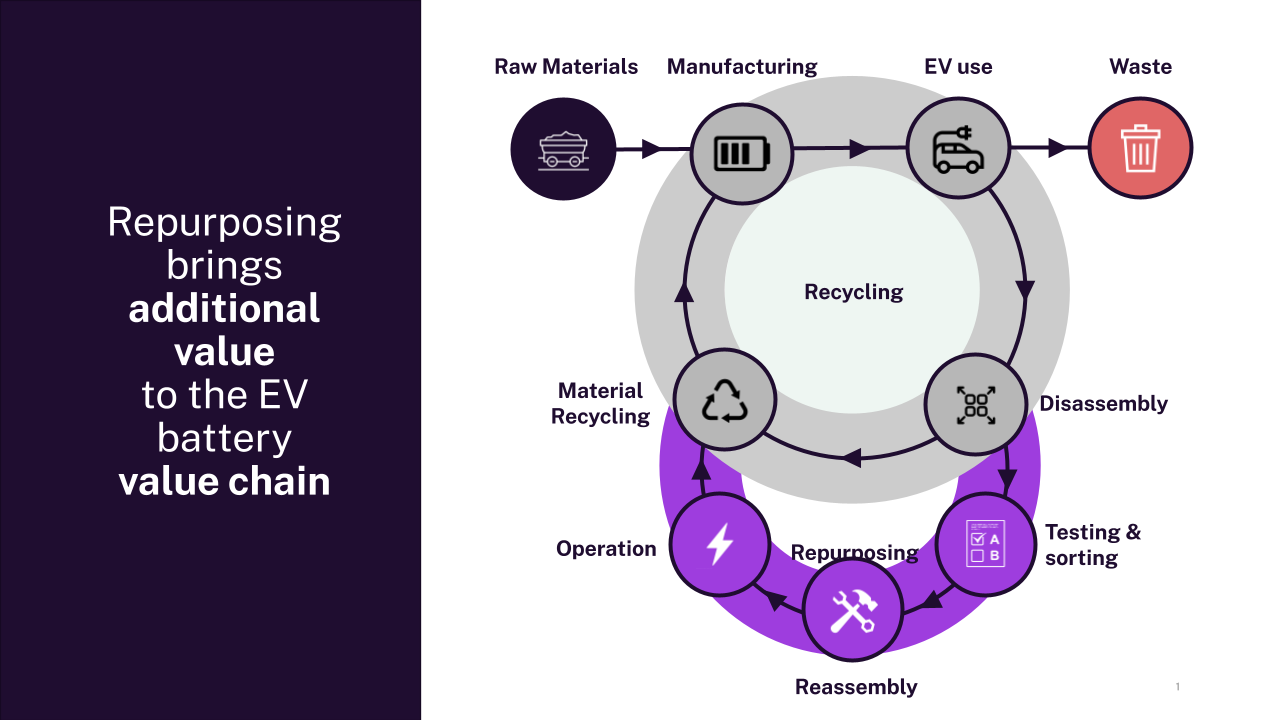The exponential growth of Li-ion batteries that are enabling a renewable future will indeed create an enormous flow of used or discarded batteries in the foreseeable future. With the continued growth in the global EV pool, a recent McKinsey report has estimated that the annual volume of discarded EV batteries can reach more than 200 GWh yearly - the equivalent to almost three million EVs.
When an EV comes off the road or at the end of its first life, the pathways for its battery include reuse (second life), recycling (material recovery), or disposal. In this article, we wanted to share some perspectives on how reuse and recycling can help minimize the environmental footprint of the EV expansion while maximizing the available value of every battery. As recycling capacities around the world increase, disposal will eventually be an extinct option, and thus not covered in this article.
Reuse: A new life for EV batteries
Second-life applications for used EV batteries are where usable batteries are put into a different use case than in its first, EV life. Most EV batteries are scrapped because of faults in individual cells or components within the EB battery pack, which means that a significant share of the internal modules are still fully functional. With the high performance and quality of modern EV batteries, the discarded batteries could still hold significant capacity which can be used in stationary applications to extend the life of the batteries.
According to our first-hand experience, most batteries will still hold at least 80% of their capacity paving the way for less demanding applications. These batteries have the potential to serve for an additional 10 or more years in lower power applications such as storing surplus energy from solar panels, increasing available power for charging infrastructure, supporting off-grid households and even working as backup power sources for technical infrastructure.
Recycling: Recovery of important materials
Recycling a battery is the process of making sure valuable materials are recovered for new products. In short, this process means that the battery is collected, disassembled, metals and plastics are recycled directly, while the battery module is shredded to get “black mass”. “Black Mass” is the black powder-like end-product that contains valuable materials like lithium and cobalt.
Whether the batteries are repurposed or not, they should end their life by going into recycling. Since EV batteries are made out of rare materials such as copper, cobalt, manganese and nickel, they could be recovered using various recycling methods to be used in new batteries again. Recycling such materials also decreases the need for mining new materials which will help to protect our environment, people, and communities. Material recovery from recycled batteries will make way for an environmentally friendly source of supply of minerals and materials for future batteries.
Reuse + Recycling = Maximum value generation from every battery
At Evyon we are developing a proprietary hardware + software ecosystem to convert discarded EV batteries into long-lived, high-quality battery energy storage systems for a range of applications. This means that we take the usable batteries at the end of their first life and make sure we extract maximum value from them. After our battery energy storage systems have reached their true end of life - typically at around 50% state of health - we make sure they find their way to recycling in order to recuperate valuable materials for new batteries. This is what we call enabling maximum value generation from every battery.
To conclude, reuse and recycling are not competitors - they should and will live hand-in-hand in order to build a sustainable battery value chain.
